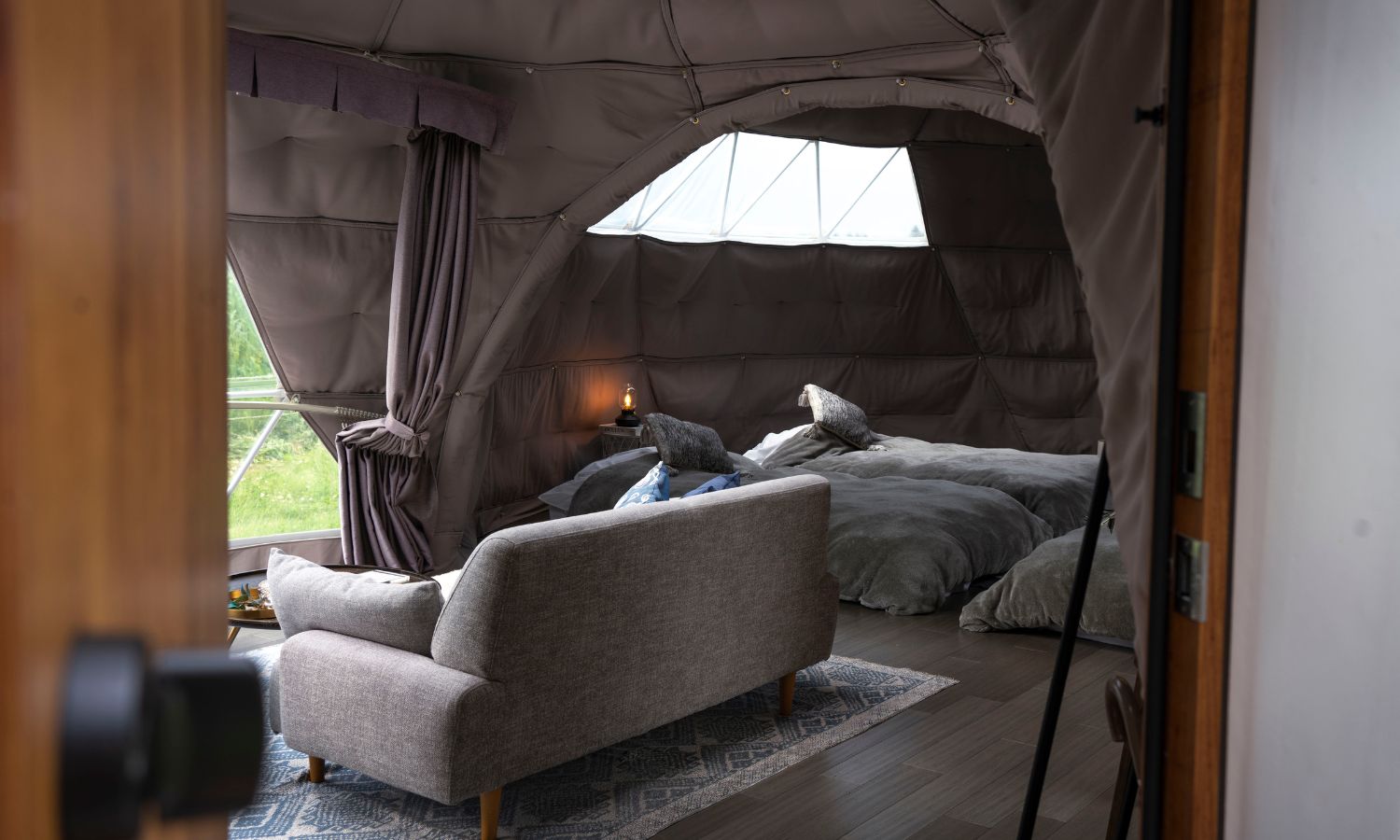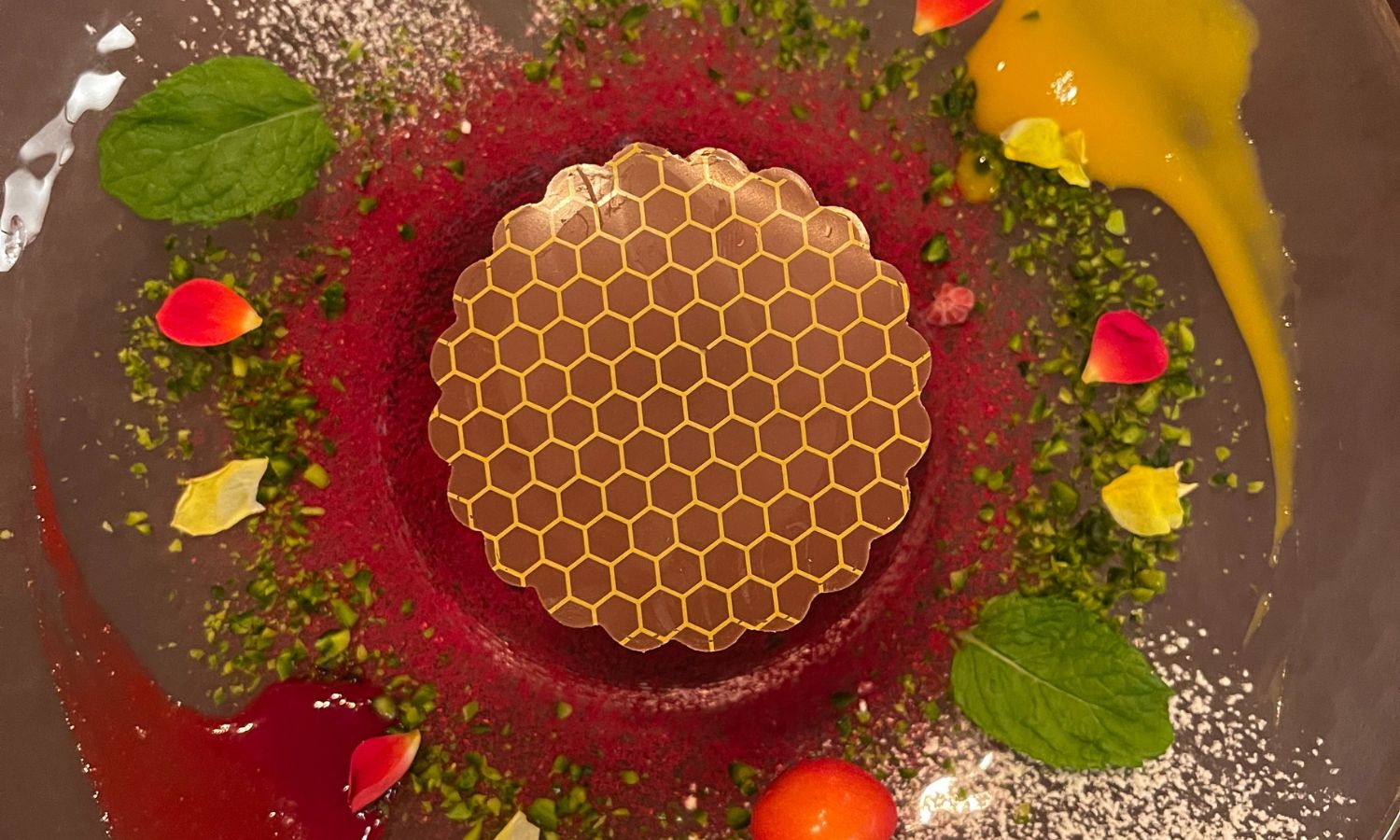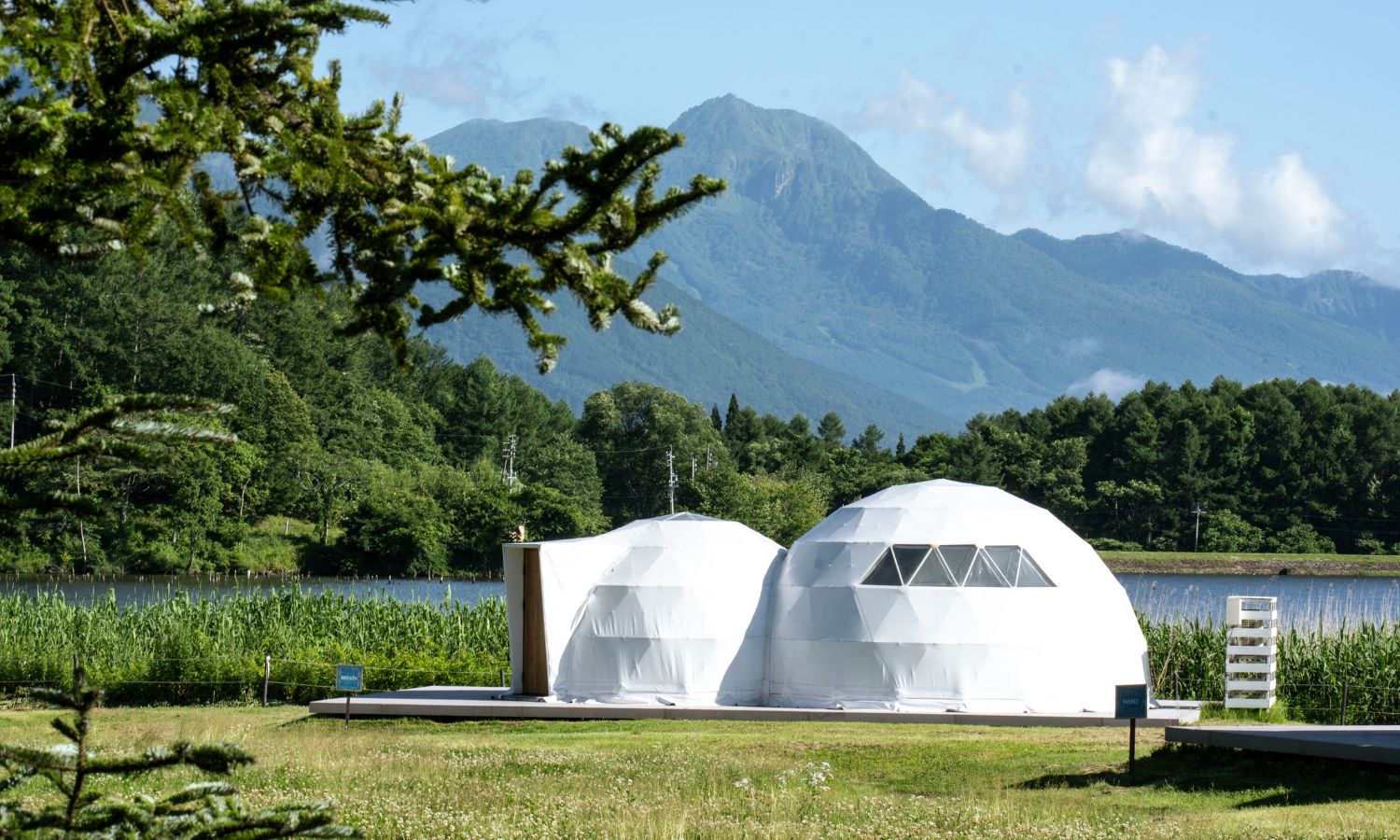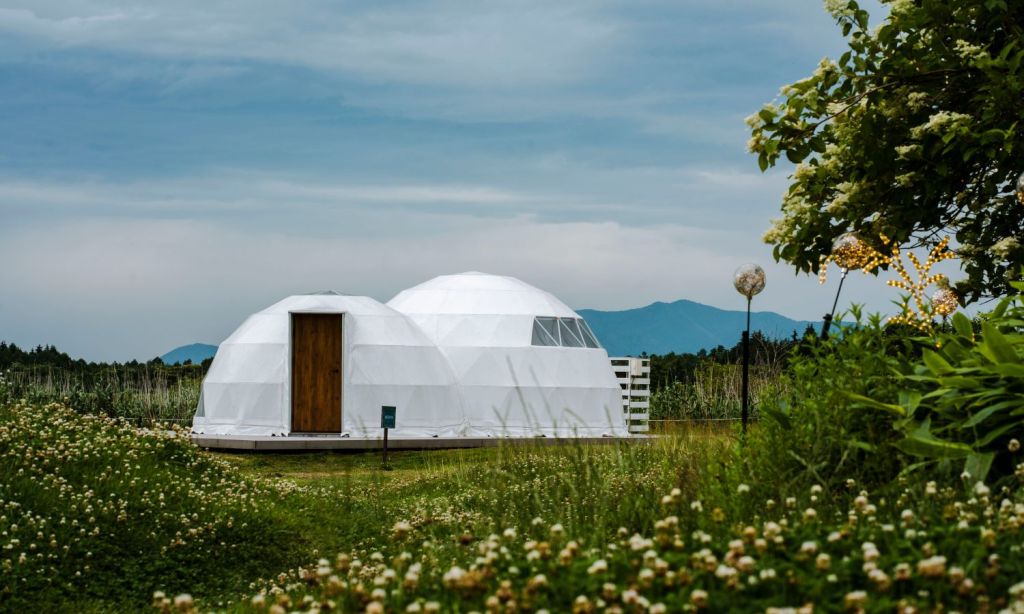Along the shore of Lake Reisenji, at the foot of the Iizuna Higashi Kogen highland region, where the mountains stand tall like ancient guardians, is Glamprook, Japan’s newest glamping resort. The network of space-like dome tents blend into the natural canvas of the mountains without disturbing the untamed wilderness yet puts guests at the forefront of Lizuna’s most iconic scenery.
The resort’s purpose was to help people “spend an elegant moment in the outdoors.” After spending a night here, I say mission accomplished. The fusion of innovative architecture and eco-conscious design is not only a delight to the eye but also offers a deep appreciation for the surrounding wilderness.

The Check-In
Despite being a glamping resort, the service is reflective of a five-star hotel in Tokyo. I pulled up to the driveway and was swiftly welcomed by a parade of staff, bowing, waving, and ushering luggage into the reception area. After checking in, a friendly staff member showed me around the main house, which holds the restaurant, bar, onsen, and toilets.
I pre-booked breakfast time before being guided to my tent. I was close enough to the main lodge that I didn’t need a golf cart, but the tents that are further away will cart your luggage, so you don’t have to drag it through the grass.

The Room
Stepping into the dome tent is akin to stepping into a portal to another world. As soon as the wood door flung open, I found myself in an adults camping fantasy. I had the twin dome, so there were four blow-up mattresses on the floor, which of course, I pushed together to make one large bed.
Don’t worry; they’re not your average Big W air mattresses, but rather, comfortable, cloud-like platforms cocooned by soft, inviting blankets. Rarely would I ever admit to getting a good night’s sleep on the floor, but this time I can confidently say I was well-rested the next day.
The tent was divided into the bedroom and living room, of which the living room was furnished with a simple two-seater lounge, coffee table, and wire lounge chair facing the lake. Nearby I heard quacks from the family of ducks and chirps from the birds in the trees. I was in the thick of nature.
As twilight descended, the true magic of glamping unfolded under the tapestry of an unblemished night sky — visible from the comfort of my bed.

The Food
For most glamping experiences, you’re provided with a BBQ or basic camping cookery to sustain you. At least, that’s been my experience. At Glamprook, dinner takes place in a dining room with scenic views, wait staff and fine-dining-worthy plates. You won’t find s’mores here.
The dinner menu follows a six-course format, starting with a refreshing salad, an appetiser in the form of paper-thin Shinshu salmon and Chinese yam, and a hearty bowl of cauliflower soup. Before mains arrive, dig into a rich bowl of pasta dolloped with burrata cheese. For the main, grilled Shinshu pork with the region’s famous Koshihikari rice and miso sauce was the option of the night. Then to finish in the most spectacular way, brownie chocolate, which looked more like a piece of art than a meal.
It was easy to slip away from the outdoors and into a civilised dining room that could rival a Four Seasons, but after dinner, on the walk back to your tent, you’re reminded of your surroundings and slip right back into glamping mode.

The Package
As you would expect when you’re camping, Glamprook is an all-inclusive resort. Before you ask, yes, that includes drinks. The sake is made locally in the Nagano prefecture, so be sure to try that. The all-inclusiveness applies to the surrounding activities and day trips, including golf, yoga, onsen, and the Lizuna Ski Resort, where you can rent equipment free of charge.
If you’re looking for something out of the box, try your hand at Wakasagi Fishing, a type of ice fishing available from January to late February when the lake freezes over.
The cost per night depends on season and day, but you can expect to pay as little as $230 AUD per night for weekday bookings or up to $580 AUD per night for the twin dome.
Related: Visiting Japan in Summer Lets You Experience Things Few Tourists Do
Related: The Most Ideal Time to Visit Japan (and What to Do When You’re There)
Read more stories from The Latch and subscribe to our email newsletter.







